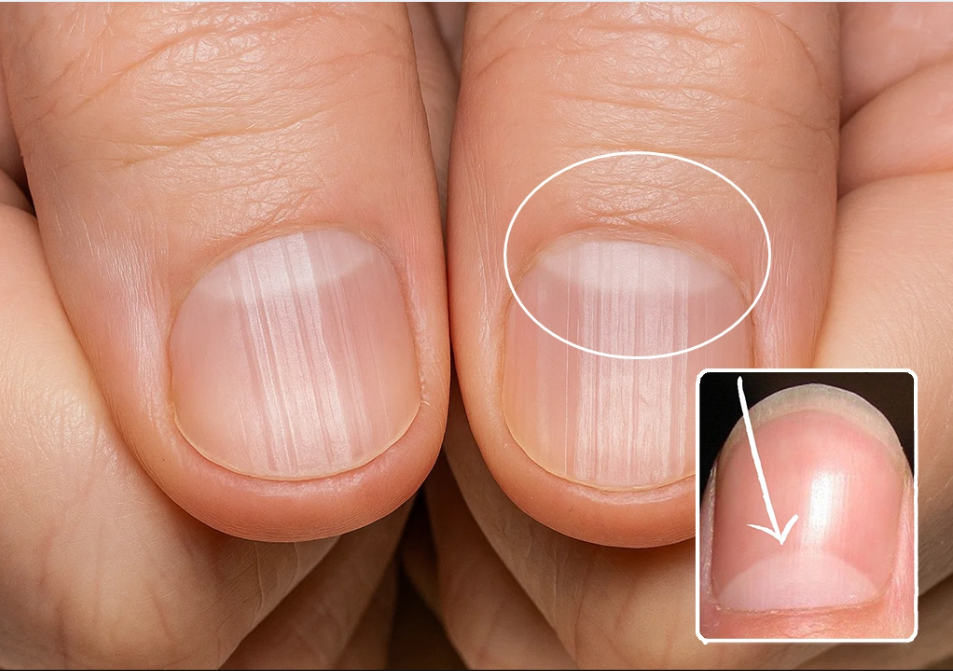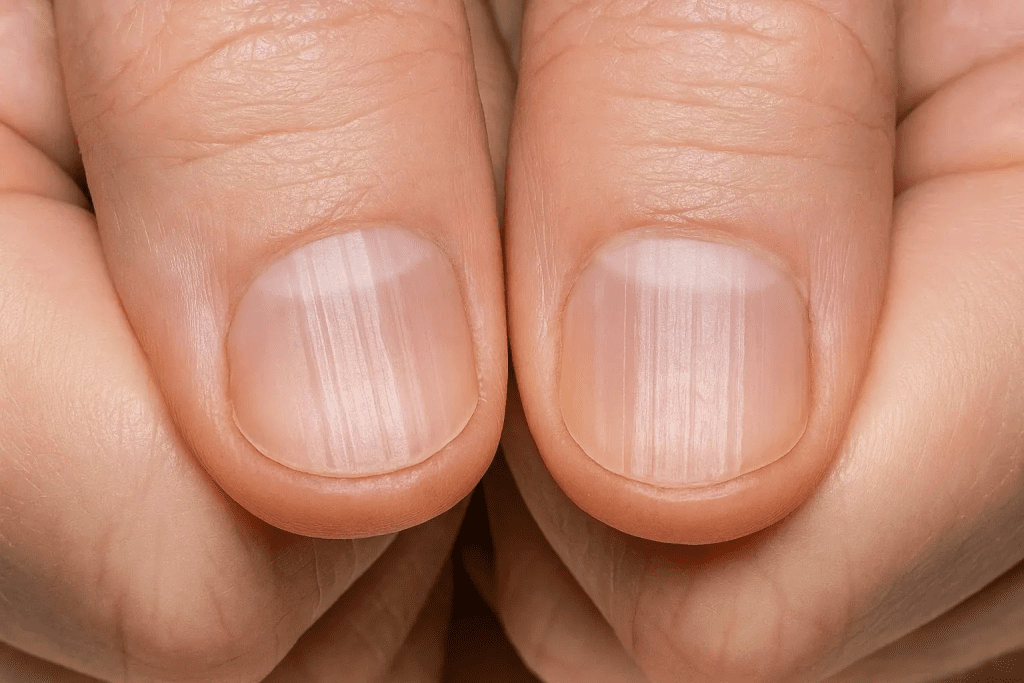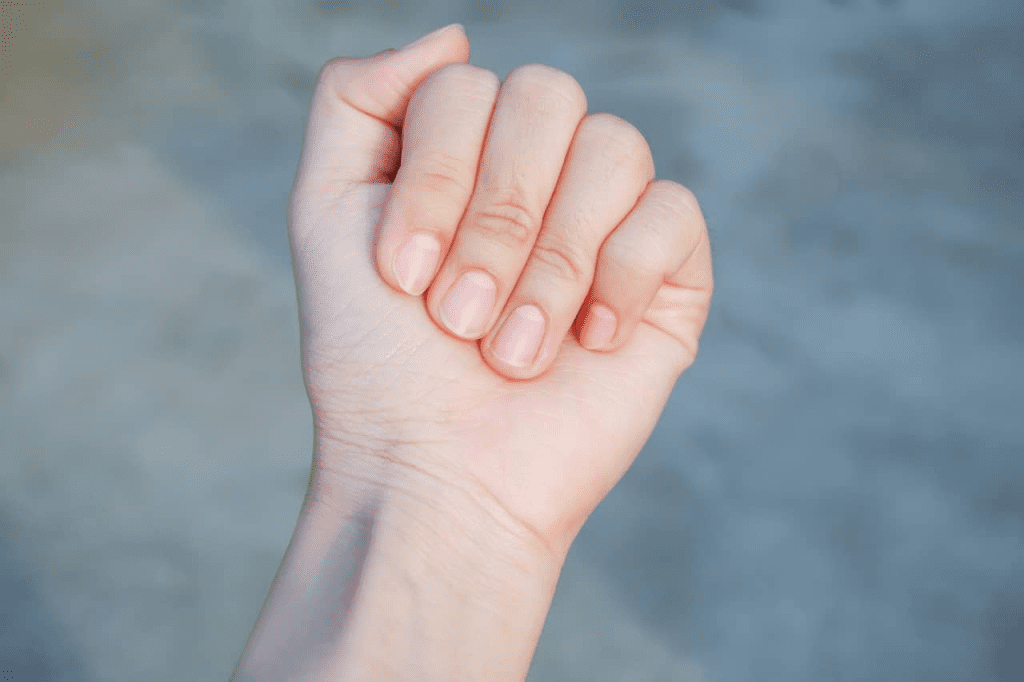The Little Detail Most People Overlook
Ever stared at your fingernails and noticed that tiny pale arc near the base? It’s shaped like a half-moon, quiet and unassuming. Most people barely give it a second glance. But that subtle curve—called the lunula—could be saying a lot more about your inner health than you realize.

Not Just for Show: The Truth Behind the “Half-Moon”
The lunula (Latin for “little moon”) is more than just a visual quirk. It’s actually the visible part of your nail matrix, the powerhouse responsible for creating new nail cells. This area doesn’t have the same dense blood supply as the rest of the nail bed, which is why it looks whitish compared to the surrounding pink.
While some people have bold, clearly visible lunulae—especially on their thumbs—others might barely see them or not at all. Skin tone, genetics, age, and even lighting can affect how noticeable they are. So if yours seem faint or missing, don’t panic—it’s often perfectly normal.
Changes That Might Be Whispering Warnings
Here’s where things get interesting. While a missing lunula isn’t usually a red flag, sudden changes in its size, shape, or color could suggest something deeper. Your body has a way of sending subtle signals, and the lunula can sometimes act as a quiet messenger.
Video : Here’s What The Little Half Moon Under Our Fingernails Means
Bigger Isn’t Always Better
If the lunula begins to expand—especially if it takes up more than one-third of the nail—it might be worth paying attention. Possible causes include:
- An overactive thyroid (hyperthyroidism)
- High blood pressure
- Ongoing stress on your heart or body
But before you jump to conclusions, remember: a single oversized lunula doesn’t mean disaster. Look at patterns across multiple fingers and monitor over time.
When the Moon Disappears
On the flip side, if your lunula starts to vanish across several nails, it could be linked to:
- Chronic fatigue
- Iron or vitamin B12 deficiency
- General nutritional gaps

This isn’t uncommon in people who’ve recently gone through extreme dieting, intense stress, or major hormonal shifts (like postpartum changes or menopause). The good news? These are usually reversible with care, rest, and nutrition.
Colors That Speak Volumes
Lunulae can sometimes take on surprising shades—each one potentially hinting at something beneath the surface:
- Bluish or purplish tint: Might suggest low oxygen circulation
- Gray or pale: Could indicate low blood flow or side effects from certain medications
- Red or blotchy: May point to inflammation, vascular concerns, or infection
If the color shift sticks around, a visit to your doctor or dermatologist is a smart move.

Nails as Mirrors of Your Lifestyle
You might be surprised how much your nails reflect your habits. A clear, healthy lunula often shows up when your diet is balanced, your hormones are steady, and your stress is under control.
Healthy lunulae tend to thrive when you’re:
- Eating enough iron, protein, and B vitamins
- Sleeping well and managing emotional stress
- Avoiding over-processing your nails with harsh treatments
On the flip side, restrictive diets, constant fatigue, or emotional burnout can cause the lunula to shrink or vanish entirely. It’s like your nails are waving a little flag, asking you to slow down and nourish yourself.
Video : Your Nails Help Diagnose Nutrient Deficiencies
When to Pay Closer Attention
You don’t need to obsessively examine your nails every morning—but there are times when you should pause and pay attention. Consider seeing a healthcare provider if you notice:
- Lunulae suddenly disappearing across most or all nails
- Changes in shape or size that stick around
- Color shifts that don’t go away
- Other symptoms like fatigue, pale skin, brittle nails, or shortness of breath
Often, something as simple as a blood test can give you answers—whether it’s low iron, thyroid imbalance, or something else entirely.

Small Signs, Big Insights
What’s fascinating is how these tiny arcs on your fingers change slowly, almost like a clock ticking in the background. You won’t see them shift overnight—but over weeks or months, they may tell a story your body’s been whispering all along.
And here’s the beautiful part: your lunula isn’t here to scare you. It’s just a quiet partner in your health journey, offering gentle reminders to take care of yourself.
So next time you’re tapping away at your keyboard or reaching for your morning coffee, take a second to glance at your fingertips. What are they trying to say?
It might be more than you think.